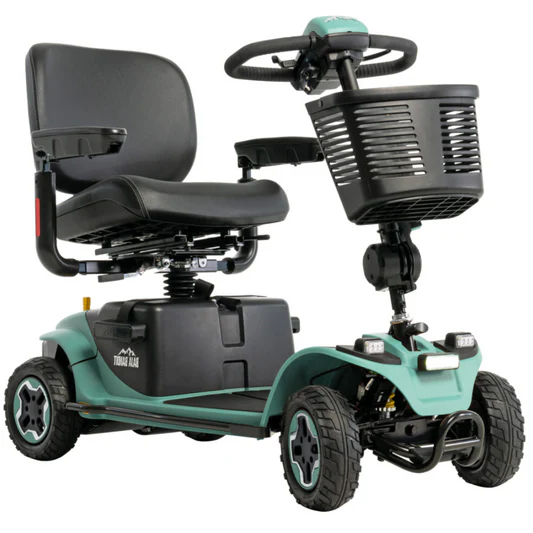Building Stronger Customer Relationships with Standard Loyalty Programs: Rewarding Repeat Business
In today’s competitive business environment, retaining customers is just as important as attracting new ones. One of the most effective ways to foster customer loyalty and ensure repeat business is through a Standard Customer Loyalty Program. These programs reward customers for their continued patronage, encouraging them to return and make additional purchases. Whether it’s through discounts, exclusive offers, or points accumulation, a well-structured loyalty program can significantly enhance customer retention.
However, to truly maximize the impact of a Standard Customer Loyalty Program, businesses need to go beyond just offering generic rewards. By leveraging customer analytics tools, brands can gather valuable insights into customer behavior and preferences, enabling them to tailor their loyalty program and make it more effective. This ensures that the rewards are not only appreciated but also drive long-term brand loyalty.
What Is a Standard Customer Loyalty Program?
A Standard Customer Loyalty Program is a traditional type of loyalty scheme where customers earn rewards or benefits based on their purchasing behavior. These programs typically involve earning points, stamps, or credits that can be redeemed for discounts, free products, or exclusive services. Some of the most common examples of standard loyalty programs include frequent shopper cards, points systems at retail stores, or loyalty bonuses at restaurants.
For businesses, a Standard Customer Loyalty Program serves several key purposes:
- Encourages Repeat Purchases: Customers are motivated to keep coming back to earn more rewards.
- Builds Brand Loyalty: As customers continue to interact with the brand and collect rewards, they develop a deeper attachment to it.
- Increases Customer Lifetime Value (CLV): With customers returning more often, businesses can increase their overall revenue and profitability.
The Role of Customer Analytics Tools in Enhancing Loyalty Programs
While a Standard Customer Loyalty Program is a great starting point, the real challenge lies in making sure that it remains relevant and appealing to customers over time. This is where customer analytics tools come into play. By tracking and analyzing customer data, businesses can gain a deep understanding of their customers’ preferences, behavior patterns, and purchase history. With these insights, businesses can create more personalized loyalty experiences, ensuring that their program delivers value to each customer.
Here’s how customer analytics tools can enhance a Standard Customer Loyalty Program:
- Personalizing Rewards One of the key benefits of using customer analytics tools is the ability to personalize the rewards offered to each customer. Instead of offering generic rewards that may not resonate with everyone, businesses can use data to tailor the program to individual preferences. For example, if a customer frequently purchases a certain product, they could be offered a discount on their next purchase of that item or receive bonus points for similar products. By providing personalized incentives, businesses can improve customer satisfaction and increase the likelihood of repeat purchases.
- Understanding Customer Segments Customer analytics tools can segment customers into different categories based on factors such as spending habits, purchase frequency, or demographic information. By understanding these segments, businesses can offer targeted rewards that appeal to each group. For instance, high-spending customers may receive premium rewards, while occasional shoppers could be enticed with smaller, but more frequent incentives. This segmentation ensures that all customers feel valued, regardless of their purchasing habits.
- Tracking Customer Behavior Customer analytics tools help businesses track customer behavior across multiple touchpoints, whether it’s in-store, on a website, or through a mobile app. By tracking how and when customers make purchases, businesses can identify the best times to offer loyalty rewards or special promotions. For example, if a customer tends to shop during the holidays or on specific days of the week, businesses can send targeted reminders or offers to encourage purchases during those times. This data-driven approach helps businesses optimize the timing and relevance of their loyalty offerings.
- Increasing Engagement and Retention Using customer analytics tools, businesses can monitor how customers engage with their loyalty programs and adjust the program structure accordingly. For instance, if customers are not redeeming their loyalty points or rewards, businesses can investigate why this is happening. Are the rewards not appealing enough? Is the redemption process too complicated? By analyzing this data, businesses can refine their Standard Customer Loyalty Program to make it more engaging and user-friendly, thus increasing the chances of customer retention.
- Measuring Program Success To gauge the effectiveness of a Standard Customer Loyalty Program, businesses need to track key performance indicators (KPIs), such as the redemption rate, frequency of visits, and overall customer satisfaction. Customer analytics tools provide businesses with the ability to measure these metrics in real time, allowing them to assess how well the loyalty program is performing and identify areas for improvement. For example, if a significant portion of customers is not redeeming their rewards, the business might need to re-evaluate the reward structure or offer more appealing incentives.
The Impact of a Well-Optimized Standard Customer Loyalty Program
When properly implemented, a Standard Customer Loyalty Program can have a significant impact on a business’s bottom line. Not only does it encourage repeat business, but it also strengthens the emotional connection customers have with a brand. With the right rewards and personalization, customers will feel appreciated and valued, which increases their likelihood of returning and recommending the brand to others.
By integrating customer analytics tools, businesses can continuously optimize their loyalty programs, ensuring that they stay relevant and effective. Analytics provide actionable insights that help brands understand customer preferences, enhance the rewards experience, and improve program participation. As a result, businesses can foster stronger customer relationships, increase customer lifetime value, and ultimately achieve long-term success.
Real-World Example: Starbucks Rewards Program
One of the most successful Standard Customer Loyalty Programs is the Starbucks Rewards Program, which has gained millions of members worldwide. The program rewards customers with points (called “stars”) for each purchase, which can be redeemed for free drinks, food, and other items. Starbucks uses customer analytics tools to track members’ purchasing behavior, personalize offers, and encourage higher engagement. By tailoring rewards to individual preferences and sending timely promotions, Starbucks has been able to keep its customers loyal, turning them into brand advocates who regularly return to make purchases.
Conclusion
A Standard Customer Loyalty Program is a powerful tool for building long-term relationships with customers, fostering repeat business, and increasing brand loyalty. By integrating customer analytics tools, businesses can take their loyalty programs to the next level, offering personalized rewards, understanding customer preferences, and optimizing the overall program experience. This data-driven approach ensures that businesses can continuously refine their loyalty strategies to meet customer needs and drive sustainable growth.
Also read: Benefits of Heavy-Duty Castor Wheels







